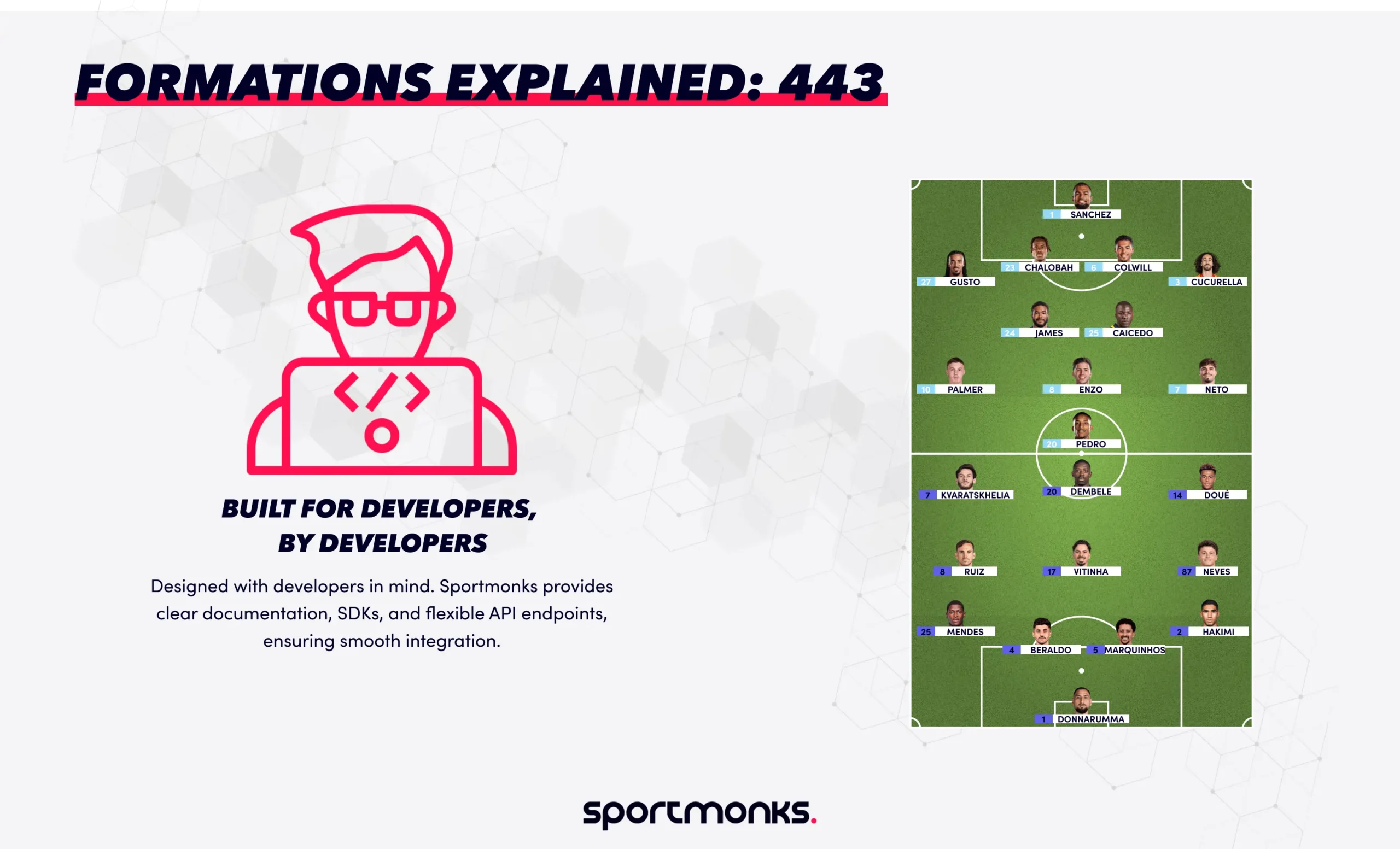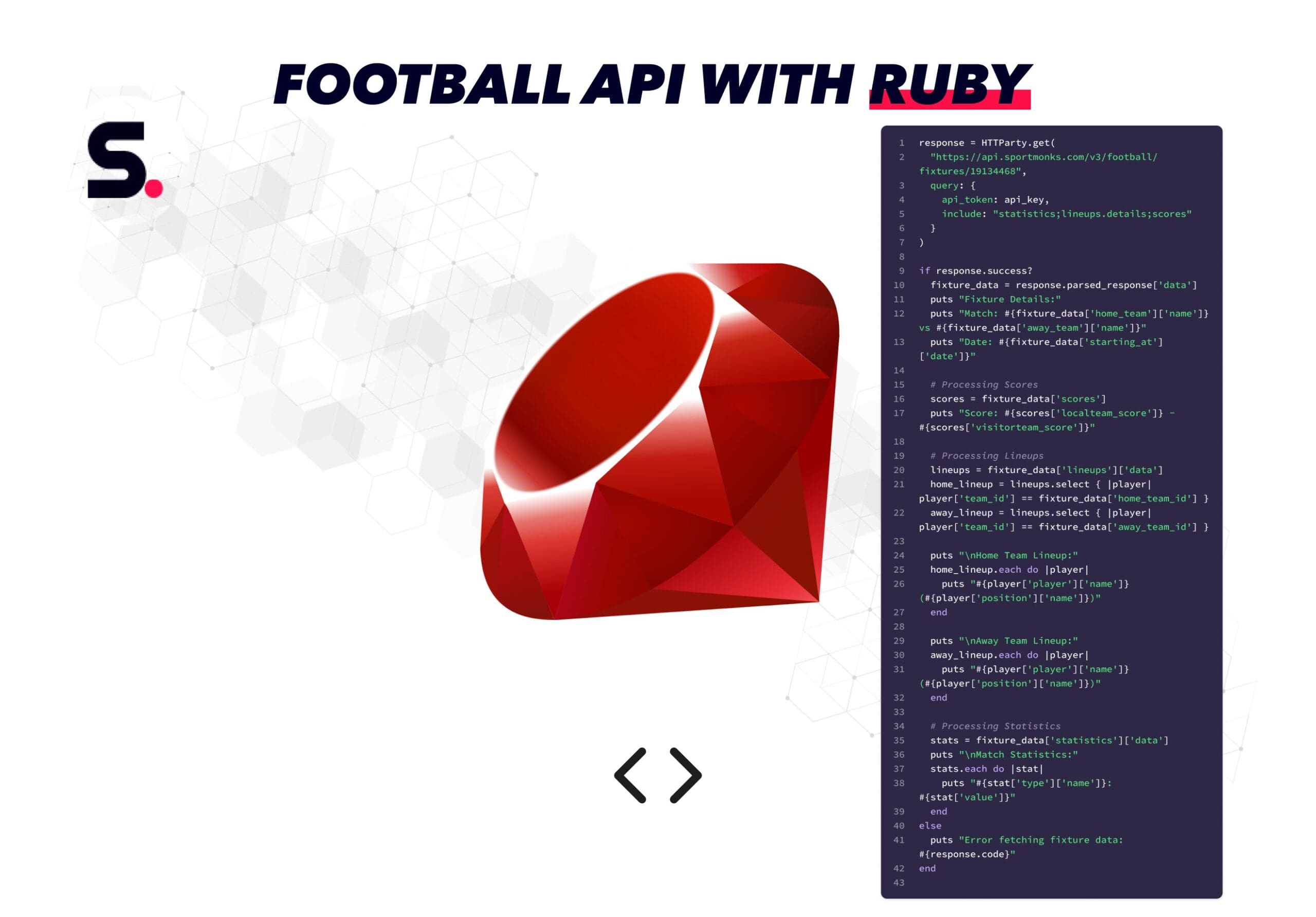
Contents
Historical evolution
The 4-3-3 formation first appeared in Brazil in the early 1960s. Following their loss in the 1950 World Cup, the Brazilian national team changed their 4-2-4 setup into a 4-3-3. They did this by moving Mário Zagallo from the attacking line into midfield for the 1962 World Cup. This tactical shift gave them more stability and control. At a similar time, Uruguay had also tried a similar formation during the 1950 and 1954 World Cups.
However, the formation truly became famous around the world with the “Total Football” philosophy used by the Netherlands and Ajax in the 1970s. This style of play, led by Rinus Michels, made the 4-3-3 popular for its fluidity and the ability for players to easily swap positions.
Formation structure & player roles
In the 4-3-3 formation, the players’ jobs are clearly split across three units.
Defensive line
– Center-backs (two): Their main job is to protect the middle of the defence, stop attacks, and win headers. They also often start attacks with accurate passes from the back.
– Full-backs (left and right): These players provide defensive support on the wings. They also frequently push forward to give the team attacking width, connecting the defence with the attack.
Midfield trio
– Defensive midfielder (CDM or ‘6’): This player’s job is to protect the defensive line by breaking up the opposition’s attacks. They can also act as a deep-lying playmaker, controlling the pace of the game from a deeper position.
– Central midfielders (LCM & RCM): These two players have a dual role. They help defend by tracking back and also help attack by moving the ball forward, making creative passes, and making well-timed runs into the final third.
Front three
– Wingers (left and right forwards): These players stay wide, stretching the opposition’s defence. They are tasked with either putting crosses into the box or cutting inside to create chances and take shots.
– Central striker (number 9): This is the main goal threat. They are expected to score goals, play in tight spaces, and, in some systems, hold the ball up and link play with their teammates.
Tactical principles
The 4-3-3 formation is built around positional triangles, which give the player with the ball many passing options. This helps the team keep possession and move fluidly. Its structure also lets teams outnumber the opposition in central areas, especially when a striker drops back into midfield or a full-back moves inside.
Possession & ball retention
The midfield trio, supported by overlapping full-backs or a striker who drops deep, helps teams keep the ball and control the pace of the game. This was a key part of Pep Guardiola’s famous Barcelona team, which often had over 72% of the possession.
High pressing & counter-press
The three forwards are great for pressing opponents high up the pitch. If the ball is lost, the midfield trio is well-positioned to protect the central areas and quickly transition into a more defensive shape.
Overloads & width
The formation’s flexibility allows players to change roles, such as full-backs moving inside or a striker dropping back (a “false nine“). This creates extra players in the middle of the pitch or opens up space out wide. Teams like Napoli have used this to great effect, blending wingers and overlapping full-backs differently on each flank.
Tactical flexibility & adaptability
The formation can easily change into other shapes, such as a 4-5-1 or 4-2-3-1, with just a few positional changes. When attacking, more midfielders can be committed forward; when defending, the wingers can drop back to form a compact midfield block.
Strengths of the 4-3-3 formation
The 4-3-3 formation is widely used in modern football because it combines a strong attack with control in the midfield. It offers several key advantages:
High pressing & attacking energy
With three forwards leading the attack, teams can put intense pressure on opponents high up the pitch. This forces them into making mistakes in dangerous areas. This proactive style is a key part of teams like Liverpool’s relentless “gegenpressing” approach.
Maximal width & offensive stretch
Using natural wingers in the front three allows a team to stretch the play across the entire pitch. This pulls the opposition’s defensive lines apart, creating more space for both wide attacks and central players to exploit.
Midfield dominance
Having three central midfielders gives a team better control over possession and the tempo of the game. This setup makes it easier to dominate attacks and maintain fluid passing by creating triangles and constant movement.
Tactical versatility
The formation can easily change into other shapes, such as a compact defensive 4-5-1, or morph into more aggressive structures depending on what is needed in the match. This adaptability is a major reason why many teams favour the 4-3-3.
Balanced attack and defence
The 4-3-3 provides a good balance between attacking and defending. It combines a reliable backline with creative attacking options, giving the team both defensive structure and attacking fluidity.
Weaknesses & vulnerabilities of the 4-3-3 formation
While the 4-3-3 formation is tactically rich and dynamic, it has several challenges that coaches must be aware of.
Counter-attack exposure
When full-backs push forward to join the attack, they leave dangerous spaces behind them. Teams that are good at counter-attacking can exploit these gaps with pace, especially on the flanks.
Lone striker isolation
If the wingers stay too far forward or don’t support the attack properly, the central striker can become isolated. This often leaves them to battle against two central defenders on their own with little help from the midfield.
Midfield outnumbered
Teams that use formations like a 4-2-3-1 or a diamond midfield can easily outnumber the central trio. This can make it difficult for the 4-3-3 team to keep possession and control the pace of the game.
Demands high work-rate & stamina
To be successful, a 4-3-3 requires intense pressing, constant movement, and great positional awareness. Without a high level of fitness and commitment, the formation can become vulnerable, especially towards the end of matches or during a long season.
High-quality personnel required
The effectiveness of the formation depends on having technically gifted and disciplined midfielders, as well as dynamic wingers. Without these specialist players, the balance between attack and defence can fall apart.
Notable examples & coach adaptations of the 4-3-3
The 4-3-3 formation has been a key part of modern football, used by some of the game’s most influential coaches and teams.
Johan Cruyff & Rinus Michels (Ajax / Netherlands – Total Football)
In the early 1970s, the 4-3-3 became the formation of choice for Total Football, led by Rinus Michels and the legendary Johan Cruyff. Their fluid system focused on players constantly swapping positions, pressing the opposition, and smart movement all over the pitch.
Pep Guardiola – FC Barcelona (2008–2012)
Guardiola made the 4-3-3 famous for his tiki-taka style, which was all about keeping possession, intricate passing, and midfield dominance. His use of a three-man midfield of Xavi, Iniesta, and Busquets with dynamic wingers and a roaming striker redefined how modern teams play with the ball.
Jürgen Klopp – Liverpool (2017–2021)
Klopp’s version of the 4-3-3 at Liverpool was all about speed, energy, and aggressive pressing. The attacking trio and overlapping full-backs created quick, vertical attacks, while the midfield three worked hard to stay compact and drive the team forward.
Jose Mourinho – Chelsea (Mid-2000s)
Mourinho used a very disciplined 4-3-3 with Claude Makélélé as a deep-lying defensive midfielder. This gave the team control in midfield and broke up the opposition’s rhythm, helping them win back-to-back Premier League titles in 2004-05 and 2005-06.
Luis Enrique – Barcelona (2014–2017)
Enrique’s 4-3-3 was a sharp attacking system built around the “MSN” trio of Messi, Suárez, and Neymar. With Messi and Neymar moving inside and full-backs providing width, the team combined keeping possession with a deadly counter-attacking threat.
Enzo Bearzot – Italy (1982 World Cup)
Bearzot’s Italy used a fluid 4-3-3 that could change into different formations during a match, such as a 4-4-2, 5-2-3, or 3-5-2. His system combined creativity from a strong front three with tactical discipline based on zonal marking and flexibility.
Zdeněk Zeman – Various Italian clubs
Zeman was known for his aggressive, high-tempo style. His attacking 4-3-3 focused on using space, pressing, the offside trap, and short passing. His teams were famous for scoring a lot of goals, sometimes at the expense of defensive stability.
Vincenzo Italiano – Spezia / Fiorentina (recent)
Italian coach Italiano favoured a 4-3-3 that combined a deep-lying playmaker with two box-to-box midfielders. This created a compact but dynamic system for building attacks from deep. His teams could change between a mid-block and a deep-block when defending, while still transitioning quickly into attack.
Variants of the 4-3-3 formation
The 4-3-3 is a very versatile formation that has several tactical variations. Each is designed to maximise specific strengths or adapt to different match situations.
Flat 4-3-3
All three midfielders line up in a straight line at a similar depth. Their main job is to press the opposition together and stay compact. This shape is great for controlling the central areas of the pitch and staying organised in defence. A good example of this is Liverpool’s midfield trio of Wijnaldum, Fabinho, and Henderson from 2018–2020.
4-3-3 with a CDM (single pivot)
In this version, a deep-lying defensive midfielder (a number 6) sits just in front of the defence. This player’s job is to provide extra protection and to distribute the ball from deep. This gives the team a solid defence and allows for smoother transitions from defence to midfield. Sergio Busquets for Barcelona and Casemiro for Real Madrid are excellent examples of this role.
4-3-3 with a CAM (attacking midfielder)
Here, one midfielder plays in a more advanced “number 10” role, linking the midfield and attack. Their job is to make key passes and to make late runs into the penalty box. Players like Kevin De Bruyne for Manchester City and Frank Lampard for Chelsea are great examples of this role.
4-3-3 with a false 9
In this fluid and unpredictable shape, the central striker drops deep into midfield. This pulls the opposition’s defenders out of position and creates space for the wingers and midfielders to run into. This was famously used by Lionel Messi under Pep Guardiola at Barcelona and by Roberto Firmino under Jürgen Klopp at Liverpool.
How to coach or implement the 4-3-3 formation
To successfully use the 4-3-3 formation, you need to work on both the tactical understanding and technical skills of your players. This can be done through structured training drills and coaching principles.
Foundational drills and tactical patterns
– Combination, triangle passing & positional games: Use drills that focus on triangle passing and midfield rotation to help players keep the ball and be more aware of their position on the pitch. These exercises reinforce the geometric design of the formation and improve players’ movement and decision-making.
– Pressing & transition training: Implement drills that simulate losing possession and focus on quickly getting back into the team’s defensive shape. This is very important for the front three, who must press effectively and support the team when they lose the ball. Also, practise structured high-pressing drills with the forward line to force errors from the opposition and win the ball back in dangerous areas.
– Overlapping runs & wide play drills: Train the full-backs and wide midfielders to combine with overlapping runs to create width and outnumber the opposition when attacking. Include drills that focus on switching the play quickly with long diagonal passes to break through defensive lines.
– Patterns of play & tactical moves: Use pre-planned patterns of play, such as co-ordinated runs and passing sequences, to develop attacking moves that become second nature to the players.
– Warm-ups and technical circuits: Start training sessions with creative warm-up games and technical circuits that improve passing accuracy, dribbling, and movement under pressure.
Key principles and player roles
– Specialists & role clarity: Midfielders must have excellent technical skills to play in congested central areas, offering passing options and making key runs. The front three should have strong attacking instincts, providing width, pressing aggressively, and creating goal-scoring opportunities.
– Structured build-up: Encourage patience and positional discipline from the back four when building an attack from defence. This will draw out the opposition’s pressing players and create space for the midfielders to receive the ball.
– Tactical variations and adaptability: Train the team in different variations of the formation, such as with a deep-lying defensive midfielder or two defensive midfielders, so they can adapt to different match situations and the opposition’s setup.
Sportmonks: A top-tier football data provider
Sportmonks offers a robust and developer-friendly Football API that’s particularly valuable when working with tactical analysis like the 4-3-3 formation.
– Reliable and comprehensive data feed: Sportmonks’ API gives you live scores, detailed match events, and in-depth team information including formations and line-ups from over 2,500 leagues around the world.
– Formation & line-up support: You can easily get both team formations (e.g., 4-3-3) and player line-ups. This includes details on positions, jersey numbers, and whether a player is starting or on the bench, by using the formations, lineups, and lineups.detailedposition features in the API.
– Predicted line-ups before kick-off: Our Premium expected line-ups API feature uses predictive models that take into account injuries, player form, team tactics, and news to forecast the likely starting teams before they are officially announced. The accuracy rates are impressive, reaching up to 88% in leagues like the Eredivisie and about 84% in the Premier League and Champions League.
 – Developer-first design and documentation: Sportmonks is known for its user-friendly REST endpoints, powerful filtering options, nested includes, and clean documentation. This makes it easy to integrate for both new and experienced developers.
– Developer-first design and documentation: Sportmonks is known for its user-friendly REST endpoints, powerful filtering options, nested includes, and clean documentation. This makes it easy to integrate for both new and experienced developers.
Power your tactical insights with Sportmonks
The 4-3-3 is all about balance, width, and midfield control, but analysing it properly requires reliable data. With Sportmonks’ Football API, you can access live formations, player positions, and predicted line-ups before kick-off across more than 2,500 leagues worldwide. Whether you’re building a tactical dashboard, a fantasy app, or a betting tool, our developer-friendly endpoints give you the precision and flexibility to bring tactical analysis to life.
Get started with Sportmonks today and transform the way you track formations and line-ups.



